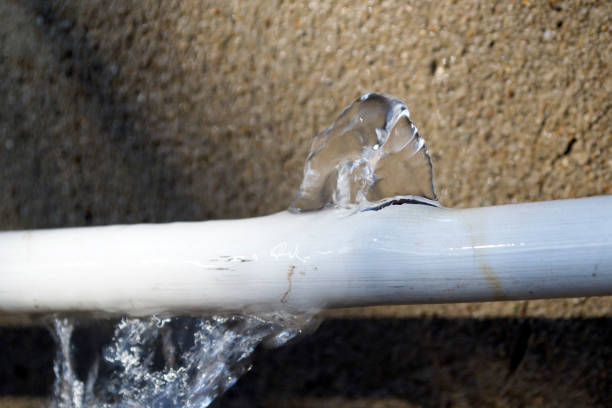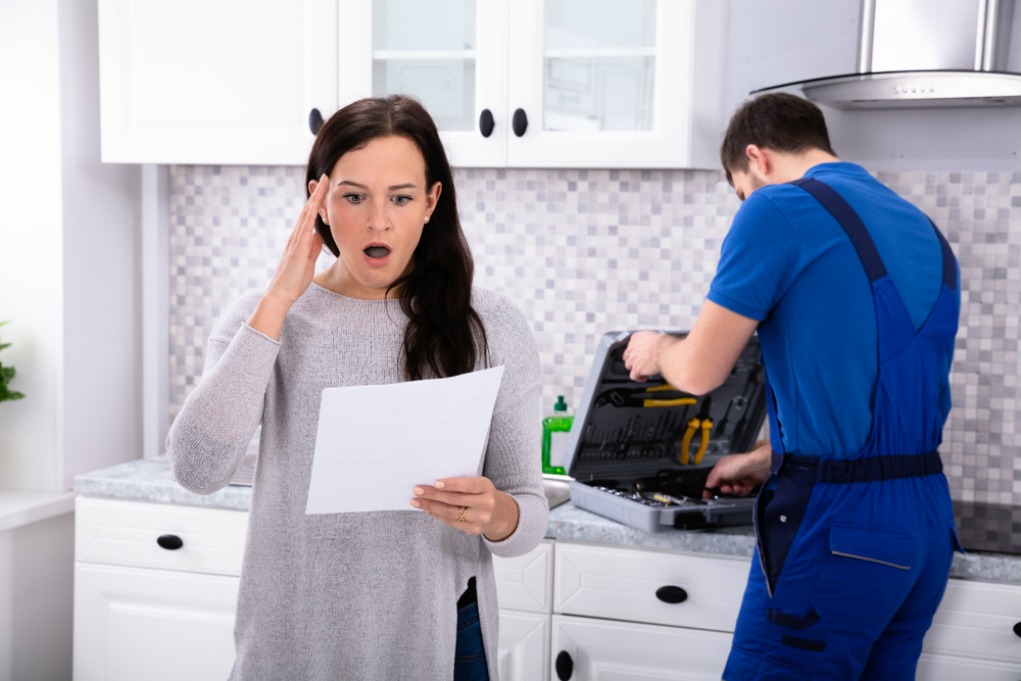Dealing with Plumbing Issues in Older Homes: Expert Advice
Dealing with Plumbing Issues in Older Homes: Expert Advice
Blog Article
What are your thoughts and feelings on Common Plumbing Problems in Older Homes?

Older homes typically feature charm, personality, and history, yet they can additionally bring a host of pipes issues. Whether you're taking care of aging pipelines, low tide stress, or leakages, knowing exactly how to resolve these common issues is critical to maintaining a secure and useful home. In this overview, we'll explore the normal plumbing challenges dealt with by older homes and supply practical options to keep your plumbing in leading shape.
Recognizing Typical Plumbing Problems
Aging Pipes
Among the most usual issues in older homes is maturing pipes. Relying on the age in which your home was built, the pipes could be made from materials that have actually weakened gradually, such as galvanized steel, cast iron, or even lead. These products can corrode, end up being weak, or develop leakages, resulting in water damages and potential carcinogen.
Low Tide Pressure
If you're experiencing low water stress, maybe due to natural resources, corrosion inside the pipes, or old components that are no more functioning effectively. This can be a significant inconvenience, particularly in locations like showers and sinks.
Dripping Pipes
Leaks are one more constant concern in older homes, typically brought on by rusty or worn-out pipes. Also tiny leaks can result in considerable water damages, mold and mildew development, and enhanced water costs if not dealt with immediately.
Obsolete Components
Outdated plumbing components such as taps, bathrooms, and showerheads not just look old however may also be much less efficient, prone to leaks, or incompatible with modern-day pipes requirements.
Pipe Rust
Rust is a typical issue in older pipes, especially those made from galvanized steel or cast iron. Corroded pipes can restrict water flow, create discoloration, and ultimately cause leakages or pipeline bursts.
Examining the Condition of Your Plumbing
Checking Visible Pipes
Start by examining any visible pipelines in your house, such as those in cellars, crawl spaces, or under sinks. Try to find indications of rust, leaks, or rust, which can indicate underlying concerns.
Looking for Leakages
Check for leaks by inspecting areas around faucets, toilets, and under sinks. You can also check your water meter prior to and after a duration of no water utilize to find surprise leakages.
Water High Quality Testing
Older pipes can influence the top quality of your water. Conduct a water high quality test to check for impurities such as lead, corrosion, or other impurities that might be presented by aging pipes.
Solutions for Usual Pipes Issues
Changing Aging Pipelines
If your home has old, degrading pipes, consider changing them with contemporary materials like copper or PEX. This can be a significant investment, yet it will certainly stop future issues and boost the security and reliability of your pipes system.
Taking Care Of Low Water Stress
To repair low water stress, begin by cleaning or changing old fixtures and removing mineral build-up in the pipelines. If the problem persists, it may be essential to change areas of corroded pipes.
Repairing and Changing Leaking Pipelines
For little leakages, you can use pipe clamps or epoxy putty as a temporary repair. Nevertheless, it's best to replace leaking pipes entirely to stay clear of more damages.
Updating Components
Upgrading old fixtures to modern-day, water-efficient models can boost your home's pipes efficiency and minimize water usage. Seek components with the WaterSense tag for the very best effectiveness.
Managing Pipe Rust
If your pipes are corroded, changing them with corrosion-resistant materials like copper, PVC, or PEX is the very best service. Regular inspections and water top quality maintenance can assist protect against better deterioration.
When to Call an Expert
While some plumbing issues can be handled with DIY solutions, there are times when it's finest to call in a specialist. If you're taking care of major leakages, extensive deterioration, or are unclear regarding the problem of your pipelines, an accredited plumbing professional can offer expert evaluation and repair.
Preventive Upkeep Tips
Routine Evaluations
Regularly inspect your plumbing system for indications of wear and tear. Capturing concerns early can stop costly fixings down the line.
Water Pressure Law
Guarantee your water stress is within the recommended variety to prevent emphasizing your pipes and components. A plumber can install a pressure regulatory authority if needed.
Water High Quality Upkeep
Set up water filters or conditioners if your water quality is poor. This can protect your pipelines and fixtures from damages brought on by hard water or impurities.
Aggressive Pipeline Substitute
If your home has very old pipes, think about proactive substitute prior to significant problems occur. This can save you from emergency repairs and water damages.
Final thought
Managing pipes concerns in older homes needs a mix of alertness, preventative maintenance, and timely upgrades. By comprehending the common challenges and understanding when to seek expert aid, you can guarantee your plumbing system stays useful and trusted for several years to find.
Common Plumbing Problems in Older Homes
Older homes have a ton of character from the antique brass faucets, clawfoot tubs, and colorful tile to the Dutch doors, transom windows, and archways, there s a lot to love. Unfortunately, that character often includes old plumbing that s past its prime and isn t fit to support modern appliances.
If you own an older home and are suspicious about strange noises (ghosts?), smells, leaks, or frequent clogs in your plumbing, it's possible that your home s old age is to blame.
Learn more about the most common old house plumbing problems, and what can be done to fix them!
What Are the Most Common Plumbing Problems in Old Houses?
Old, corroded piping. Most older pipes are made of material that corrodes and rusts more easily. Even if over the years some of that piping was replaced with better material, the rest may be damaged or repaired with lower-quality material. Though expensive, it may be the best option to re-pipe your plumbing especially if there s rust or lead in your water. Slow drains. This could be the result of many issues, but most likely because of pipe bellies. These are sags in your drainpipes that happen as your home settles and shifts downward over time, putting pressure on your pipes and creating negative slopes. This can restrict water from flowing correctly through them and result in slow drains. Frequent clogging. As you might expect, pipe bellies can also lead to frequent clogging. Another reason for clogging could be due to buildup over time, or blockages from sediment and root growth. Scheduling a drain inspection and drain unclogging service can eliminate this issue. Damaged or failing sewer lines. Old homes are more likely to have foundational shifts and tree root overgrowth. This can put a lot of pressure on and in your sewer lines, leading to damage. Another common reason for failed sewer lines is because of modern appliance upgrades. Newer appliances put more strain on sewer lines, and if your old pipes aren t equipped to handle this, it can result in damage. If you have any wastewater backup, slow drains, or soft spots in your yard, you may need sewer line replacement. Worn or outdated fixtures. Plumbing fixtures old or new aren t built to last forever. Even if your fixtures seem like they re working well, it s best to check the wear on any internal parts. Minor wear and tear over time can lead to more costly leaks and plumbing issues. Our experts can perform a plumbing inspection for any part of your home s plumbing. Improper installations or repairs. Whether your plumbing was installed a hundred years ago, installed incorrectly, repaired incorrectly, or repaired with outdated materials, this can affect the long-term stability of your plumbing. In older homes especially, having your plumbing inspected is vital to preventing damage. What Are Old Plumbing Pipes Made Of?
Galvanized steel. Most often used between the 1930s and the 1980s, this piping material was discovered later in the 1990s to be prone to rust and corrosion, releasing lead into the water, which is dangerous to consume. Copper. Most homes built around the 1960s are likely to have copper piping. Unlike galvanized steel, copper is one of the most durable materials for plumbing pipes. The issue with this material is the risk of lead, which could be present in the piping itself or the solder applied to the joints and fittings. PVC. This material is still used today and was often used in older homes where piping was replaced because it was easy and inexpensive to install. PVC is also very durable, lead-free, resistant to rust and corrosion, and handles high water pressure well. The downside is that hot water can make it warp. How to Fix Plumbing Problems in Old Homes
Have your plumbing inspected. Before you begin or schedule any type of repair, schedule a plumbing inspection. An expert will be able to properly identify all the issues in your plumbing and the best solution to avoid further damage. Get your plumbing repaired or replaced as needed. Depending on the issues found with your plumbing, you may need minor repairs or larger replacements. Make sure these issues are addressed before you tackle any smaller issues. Remove any clogs or buildup. It s likely your old pipes are clogged with debris, mineral buildup, hair, tree roots, and more. Having your drainpipes cleaned will improve overall drainage and help prevent future leaks. Replace old fixtures. Before replacing any fixtures, check with your local plumber first. Not only can new fixtures strain your old plumbing pipes, but installing them incorrectly can lead to costly damage.

As an enthusiastic person who reads about , I was thinking sharing that segment was mandatory. Enjoyed our entry? Please share it. Help others check it out. We thank you for reading our article about Common Plumbing Challenges In Old Buildings.
Customer Reviews Report this page